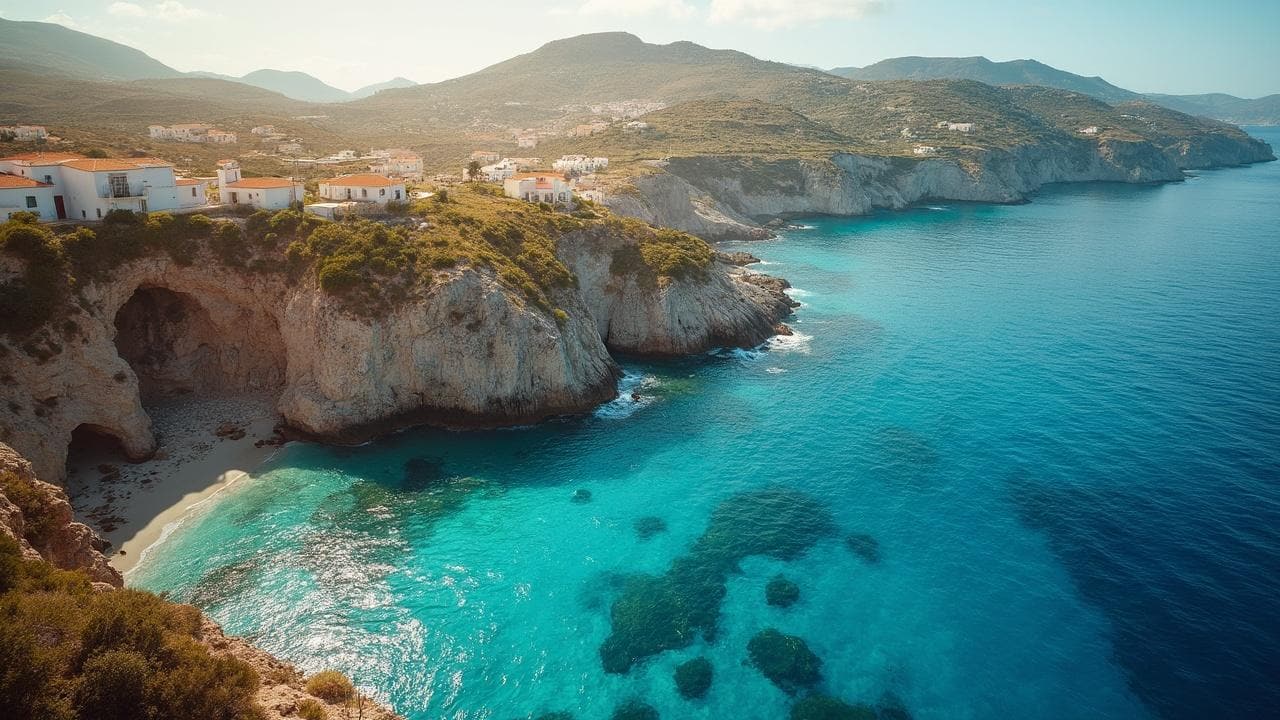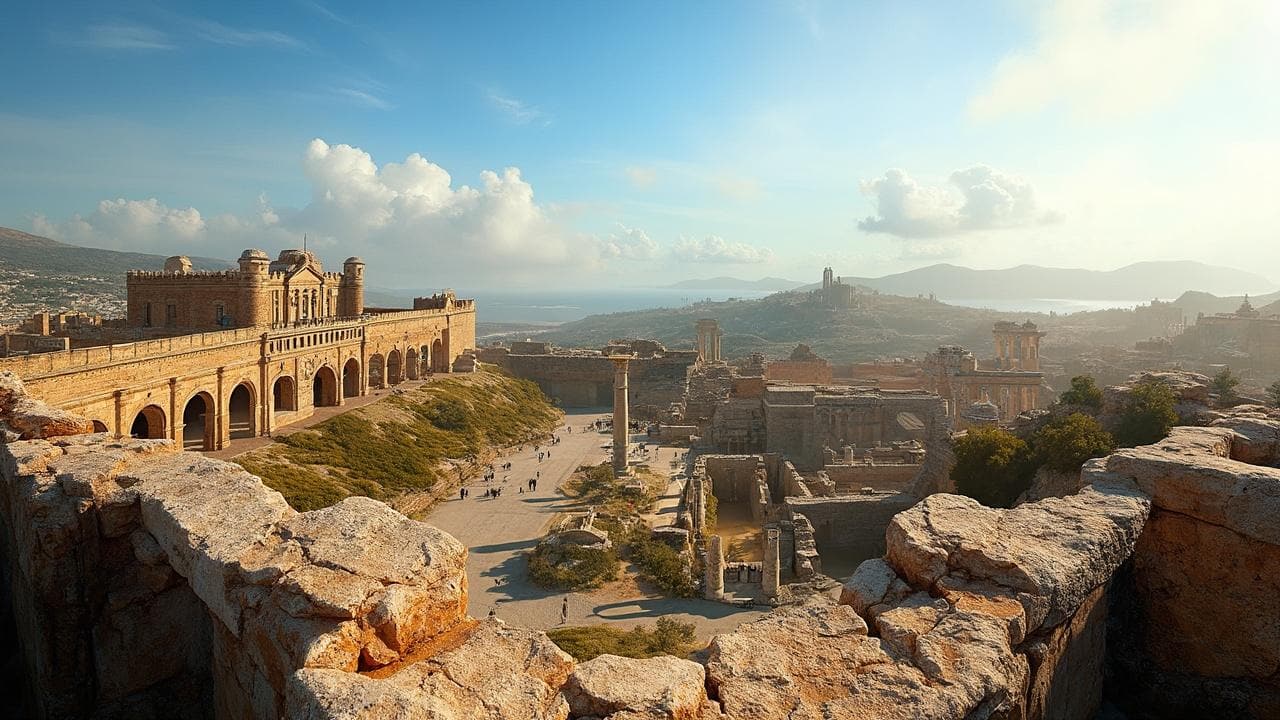Crete, the largest Greek island, is a Mediterranean paradise that captivates travelers with its diverse landscapes, rich history, and vibrant culture. As I set foot on this enchanting island, I couldn’t help but feel a sense of excitement for the adventures that lay ahead. From pristine beaches to rugged mountains, ancient ruins to charming villages, Crete offers a wealth of experiences for every type of traveler.
Unveiling the natural wonders of Crete
Crete’s geography is a testament to nature’s artistry. With an impressive 8,450 square kilometers of land and a staggering 1,046 kilometers of coastline, the island is a playground for outdoor enthusiasts. As I hiked through the island’s rugged terrain, I was struck by the sheer diversity of landscapes.
The island’s backbone is formed by towering mountain ranges that stretch from east to west. These peaks not only provide breathtaking views but also create distinct microclimates across the island. In the east, you’ll find arid landscapes reminiscent of North Africa, while the west boasts lush forests that seem worlds apart.
One of Crete’s most iconic natural features is its network of gorges. The Samaria Gorge, in particular, is a must-visit for any adventure seeker. As I trekked through this 16-kilometer-long canyon, I was in awe of the towering cliffs and the crystal-clear stream that winds its way through the gorge.
Crete’s climate is quintessentially Mediterranean, with hot, dry summers and mild winters. Even in early December, temperatures can soar above 25°C, making it an ideal destination for those seeking to escape colder climates. The south coast, with its North African-like climate, is particularly appealing for sun-worshippers.
Here’s a quick overview of Crete’s diverse landscapes:
- Pristine beaches with crystal-clear waters
- Rugged mountain ranges perfect for hiking
- Dramatic gorges for canyoning adventures
- Lush forests in the west
- Arid landscapes in the east
Immersing in Crete’s rich history and culture
Crete’s history is as rich and layered as its landscape. As I explored the island, I felt like I was walking through the pages of a history book. The island was the birthplace of the Minoan civilization, one of the most advanced ancient cultures that flourished from 2700 to 1420 BC.
Throughout its long history, Crete has been ruled by various empires, including the Romans, Byzantines, Venetians, and Ottomans. Each of these civilizations has left its mark on the island, creating a unique cultural tapestry that continues to fascinate visitors today.
One of the highlights of my trip was visiting the Palace of Knossos, the center of Minoan civilization. As I walked through the ruins, I could almost imagine the legendary King Minos and the mythical Minotaur roaming these ancient halls. The site’s intricate frescoes and advanced architectural features are a testament to the sophistication of this ancient culture.
Crete’s rich mythology is another aspect that captivates visitors. The island is associated with numerous Greek gods and legends, including Zeus, Athena, and Dionysus. As I hiked through the Cretan mountains, I couldn’t help but think of the myths that placed Zeus’s birthplace in one of these caves.
For history buffs, Crete offers a wealth of museums and archaeological sites. The Heraklion Archaeological Museum houses an impressive collection of Minoan artifacts, including the famous Phaistos Disc, whose purpose and meaning remain a mystery to this day.
| Historical Period | Key Sites | Significance |
|---|---|---|
| Minoan (2700-1420 BC) | Palace of Knossos, Phaistos | Birthplace of Europe’s first advanced civilization |
| Roman (67 BC-330 AD) | Gortyn | Capital of Roman Crete |
| Venetian (1204-1669) | Fortezza in Rethymno | Impressive fortress showcasing Venetian architecture |
Exploring Crete’s vibrant tourism scene
Crete has long been a popular holiday destination, and it’s easy to see why. The island offers a perfect blend of natural beauty, historical sites, and modern amenities. As a digital nomad, I found Crete to be an ideal spot for combining work and leisure.
The main tourist areas are centered around the cities of Heraklion, Chania, and Rethymno. Each of these cities has its own unique charm and attractions. Heraklion, the capital, is a bustling modern city with excellent museums and easy access to Knossos. Chania, with its picturesque Venetian harbor, offers a more laid-back atmosphere. Rethymno strikes a balance between the two, with its well-preserved old town and beautiful beaches.
While summer is the peak tourist season, I found that visiting in the off-season (winter) offered a quieter, more authentic experience. The weather was still pleasant, and I had many of the popular sites almost to myself. If you’re looking for a cultural experience, consider visiting during Easter, when the island comes alive with vibrant celebrations and traditions.
For those seeking adventure, Crete offers a wide range of activities:
- Hiking through stunning gorges
- Swimming and snorkeling at pristine beaches
- Exploring ancient archaeological sites
- Diving in crystal-clear waters
- Indulging in delicious local cuisine and wine
When it comes to getting around, I found that renting a car was the best way to explore the island’s hidden gems. The extensive bus system is also a reliable option for budget-conscious travelers. For those flying in, Heraklion and Chania both have international airports with good connections to major European cities.
Savoring the flavors of Cretan cuisine
No trip to Crete would be complete without indulging in the island’s renowned cuisine. Cretan food is a celebration of fresh, local ingredients and traditional cooking methods. As someone who loves to explore new flavors, I was in culinary heaven during my stay on the island.
Olive oil is the cornerstone of Cretan cuisine, and the island produces some of the finest in the world. I had the opportunity to visit an olive oil farm and learn about the production process. The peppery, fruity taste of freshly pressed olive oil is something I’ll never forget.
Cretan wine is another highlight of the local gastronomy. The island has a long history of winemaking dating back to Minoan times. I spent an afternoon at a local winery, sampling unique varietals like Vidiano and Kotsifali. The passion and knowledge of the winemakers left a lasting impression on me.
Some must-try Cretan dishes include:
- Dakos: A rustic appetizer of barley rusk topped with grated tomato, feta, and olive oil
- Kalitsounia: Small cheese pies that can be sweet or savory
- Gamopilafo: A hearty rice dish traditionally served at weddings
- Sfakiani pita: A thin pancake filled with soft cheese and drizzled with honey
For budget-conscious travelers, I found that eating like a local was not only delicious but also affordable. A typical day’s food budget, including groceries and eating out, came to around $30-35. This allowed me to sample a wide variety of local dishes without breaking the bank.
Crete is truly a hidden Mediterranean paradise that offers something for every type of traveler. Whether you’re seeking adventure, history, culinary delights, or simply a beautiful place to relax, this Greek island has it all. As I bid farewell to Crete, I knew that the memories of its stunning landscapes, rich culture, and warm hospitality would stay with me for years to come.


